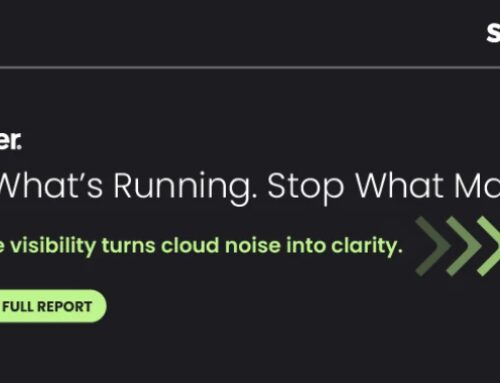In an increasingly digital world, the stakes around cybersecurity have never been higher. As businesses grow reliant on technology, they also become more susceptible to sophisticated cyber threats. Traditional cyber defense strategies, while still essential, often fall short against the dynamic and evolving face of cybercrime. Enter Artificial Intelligence (AI)—a game-changer in the Cybersecurity Operations (SecOps) arena and penetration testing (pentesting).
Understanding the Role of AI in Cybersecurity
AI technologies, especially when integrated into SecOps, promise to streamline processes, enhance threat detection, and improve the overall efficacy of cybersecurity measures. By leveraging machine learning algorithms and data analytics, organizations can identify vulnerabilities more quickly and respond to threats with agility.
The Pentesting Paradigm Shift
Penetration testing has traditionally required human expertise, time, and the potential for oversight. While skilled professionals are invaluable in understanding complex systems and human factors, AI introduces capabilities that can augment human skill sets by analyzing vast datasets and automating tedious tasks.
Here are some ways AI can redefine pentesting:
-
Automated Vulnerability Scanning: AI can analyze network traffic and system vulnerabilities at an unparalleled speed. Machine learning algorithms can continuously learn from past scans, adapting to new vulnerabilities as they arise and reducing the time pentesters spend identifying weaknesses.
-
Enhanced Threat Modeling: Through AI, organizations can create advanced threat models that simulate various attack vectors based on historical data. These simulations allow security teams to prioritize risks and better prepare for specific threats that may target their infrastructure.
-
Real-Time Security Monitoring: AI enhances real-time monitoring by examining patterns and behaviors across the network. Unusual activity that deviates from established patterns is flagged for immediate review—a crucial function in catching intrusions before they escalate.
-
Intelligent Reporting: AI-driven tools can generate detailed reports following pentests, analyzing vulnerabilities, and suggesting remediation actions. These reports can save time and provide deeper insights into how vulnerabilities can be exploited and mitigated.
- Continuous Learning and Adaptation: Machine learning models can adapt based on new data and evolving threats. This capability ensures that the security posture of an organization remains relevant in the face of new vulnerabilities and attack methods.
Challenges and Considerations
While the potential benefits of integrating AI into pentesting and SecOps are substantial, there are challenges that organizations must consider:
-
Bias in AI Models: If the data used to train AI models is biased or lacks comprehensiveness, organizations may overlook significant vulnerabilities or develop false confidence in their security posture.
-
Complexity of Implementation: Integrating AI tools into existing security frameworks can be complex, requiring a thorough evaluation of systems, protocols, and staff training.
-
Security of AI Tools: Just as organizations must defend against cyber threats, the AI tools themselves need to be secured. Attackers may target AI systems to undermine their effectiveness or manipulate their decision-making processes.
- Human Element: While AI can significantly enhance pentesting, the human element cannot be entirely replaced. Human intuition, creativity, and ethical considerations are irreplaceable when designing effective security strategies.
Strategic Implementation of AI in SecOps Pentesting
To successfully leverage AI in SecOps and pentesting, organizations should consider the following strategies:
-
Assess Organizational Needs: Determine where AI can provide the most value. Is it in vulnerability management, monitoring, or reporting? Clear objectives will guide implementation effectively.
-
Invest in Training: Equip staff with the skills necessary to work alongside AI tools. This includes understanding AI outputs and knowing how to leverage insights effectively.
-
Choose the Right Tools: Research and select AI-driven pentesting tools that align with the organization’s specific requirements. Tools should integrate seamlessly with existing SecOps procedures.
-
Establish a Feedback Loop: Create a continuous feedback cycle between AI outputs and human analysts. This loop allows for constant improvements in both AI models and cybersecurity approaches.
- Stay Updated: The cybersecurity landscape is constantly evolving. Organizations must remain vigilant and adapt their AI strategies to keep pace with new threats and technologies.
Conclusion
The future of cyber defense lies in the successful integration of AI into SecOps and pentesting strategies. By embracing this technology, organizations can bolster their defenses against the evolving threat landscape, perform more efficient and comprehensive assessments, and ultimately create a more robust cybersecurity posture. As we navigate this complex environment, the blending of human expertise with AI-driven insights will be critical in protecting sensitive data and maintaining trust in digital ecosystems.
The journey towards AI-enhanced cybersecurity is ongoing, and those who strategically invest in this integration today will be better positioned to withstand the cyber challenges of tomorrow.



![[Webinar] Shadow AI Agents Multiply Fast — Learn How to Detect and Control Them](https://secopsnextgen.com/wp-content/uploads/2025/09/webinar-500x383.jpg)
Deixe o seu comentário